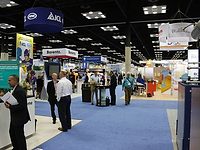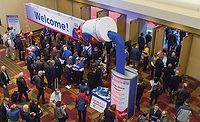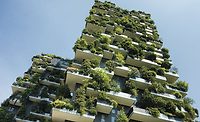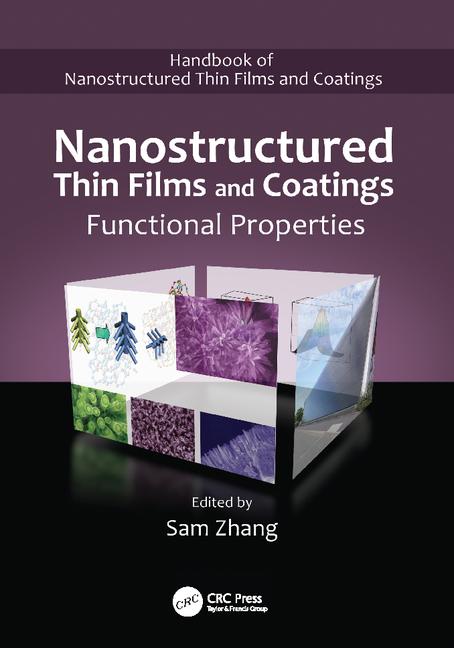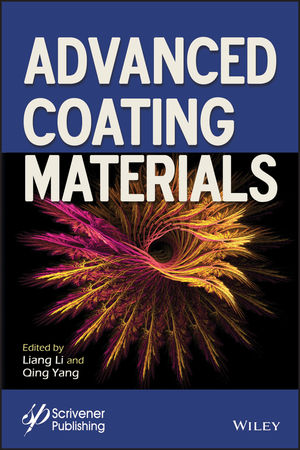Efficiency and Sustainability: Hot Topics at ACS
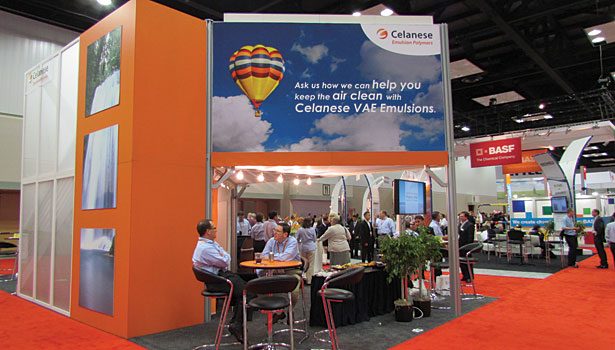





The American Coatings Show and Conference was held May 7-10 at the Indianapolis Convention Center. With 427 exhibitors and more than 7,500 overall participants from 69 countries, this year’s ACS broke all of its previous records for visitors, exhibitors and footprint. (In 2010, there were 328 exhibitors and 6,700 attendees.) Following is a brief report on some of the technologies presented on the show floor.
Huntsman Introduces IR Pigment
Huntsman hosted a press breakfast the first day of the show to announce the launch of its ALTIRIS® infrared reflecting (IR) pigment. The pigment allows color surfaces to behave as white, giving coatings and polymer products in any color the power to reflect solar energy. Dr. Rob Portsmouth, Business Development Director at Huntsman, who was involved with this project from concept to launch, explained that Huntsman has also developed a software program that enables formulators to match colors using the ALTIRIS pigment.
Colorful coatings containing ALTIRIS will reflect the sun’s energy back into space, cooling the space beneath it. The pigment can dramatically increase solar reflection by more than 100 percent in some color ranges, even in black.
Dr. Hashem Akbari, a Building, Civil and Environmental Professor and Leader of the Heat Island Group at Concordia University, and the principal investigator for the development of cool-colored materials, a collaborative effort with the industry, gave a staggering example. He explained that if every roof in the world were painted with a cool roof coating (a process that would take approximately 20 years), enough energy would be reduced to offset the CO2 emissions of all of the existing cars in the world for 50 years. And no incremental cost is required, as all roofs need to be recoated at some point.
New cool coating applications are possible with this new product. Colorful, yet cool automotive coatings will reduce air conditioning use in cars. And BMW is already working with the pigment in a coating for its black leather jackets that are popular with motorcyclists.
Arkema Introduces More Cool Roof Technology
Arkema also hosted a press breakfast during the show. This year’s ACS marked Arkema’s first opportunity in North America to showcase the breadth and depth of the company’s coatings portfolio since it completed the acquisition of the Cook Composites and Polymers, Cray Valley and Sartomer coatings businesses from Total in 2011. The coatings business segment represents a growing percentage of Arkema’s revenue. In 2006, coatings raw materials represented three percent of the company’s business. Last year, overall revenue from coatings raw materials reached $1.8 billion, or approximately 22 percent of total business.
Arkema introduced new binder systems for use in cool roof coating applications. These systems are based on Kynar Aquatec® PVDF binders, developed with Kynar fluoropolymers and ENCOR® flex polymers.
“Cool roof coatings are technically challenging but represent a fast-growing market,” said Eric Kaiser, Marketing Director for Arkema Coating Resins. Currently, three systems are available, allowing greater formulation flexibility across different applications.
• AC III Binder System – This system uses a Kynar Aquatec FMA-12 PVDF-based topcoat and ENCOR Flex 187 all-acrylic basecoat to provide the highest possible level of performance and durability. It is designed primarily for the most demanding cool roof coating applications.
• AC II Binder System – Utilizing a proprietary ENCOR Flex 187 all-acrylic polymer, this base and topcoat system delivers excellent performance and meets ASTM D 6083, “Standard Specification for Liquid Applied Acrylic Coating Used in Roofing.”
• AC I Binder System – This ENCOR Flex 3186 styrene acrylic system provides a good mix of performance and value for less demanding applications.
Also under the Arkema umbrella, Coatex featured its waterborne rheology additives. Recent innovations focus on key issues that today’s paint formulators are challenged with, such as reduction of VOCs, sustainable formulating and TiO2 optimization.
Coatex’s line of products includes: COAPUR™ associative polyurethane thickeners that cover the full spectrum of rheology profiles, from newtonian to pseudoplastic, and are free of VOCs, alkyl phenol ethoxylate (APEO) surfactants and heavy metals; POLYPHOBE™ and RHEOTECH™ associative acrylic thickeners that provide in-can appearance, syneresis control and thickening effectiveness; VISCOATEX™ acrylic thickeners that offer robustness and versatility; ECODIS™ dispersing agents that are recommended when both long shelf life and cost/performance ratio are required for medium- to high-PVC formulations; and COADIS™ dispersing agents that are designed to meet gloss, corrosion or scrub resistance requirements and are recommended for a variety of pigments.
The Sartomer division of Arkema presented the new CN9026, a highly functional aliphatic urethane acrylate that demonstrates outstanding weatherability in exterior hardcoat applications compared to traditional urethane acrylates. This oligomer is well suited for coatings used on automotive finishes, auto accessories made of plastic or metal, and window films for automotive and structural applications. Its scratch resistance also makes it suitable for sensitive electronic devices and their component parts.
High-Efficiency Products
The concept of sustainability is evolving and becoming more well defined. There is a clear move to develop products that help reduce energy, improve efficiency and make coatings last longer.
Clariant exhibited a range of products from its Pigments, Additives and Industrial & Consumer Specialties Business Units. Clariant Pigments’ line of ED pigments are organic materials that have been surface treated to allow for easier incorporation into the paint system with a dissolver and without an additional milling step. This unique technology saves processing time and energy costs that are not achievable with standard pigments.
The Clariant Additives business featured Ceridust, Licocene and Licowax waxes, formulated for use in paints, coatings and inks to enhance such properties as sandability, smoothness, scratch resistance, water repellancy and surface texture. Clariant Ceridust grades are micropowders and can be easily dispersed in paints with a minimal amount of energy. Licocene performance polymers are built upon the company’s proprietary metallocene polymerization process, which produces highly effective additives for demanding applications such as powder coatings.
The Dow Chemical Co.
Four businesses within The Dow Chemical Co. showcased innovations in coatings. Dow Coating Materials (DCM) featured technology innovations that include EVOQUE™ pre-composite polymers and ROPAQUE™ opaque polymer for 10-20 percent (and in some cases even more) TiO2 reductions in interior and exterior architectural coatings; new ACRYSOL™ v6x HASE and HEUR rheology modifiers; next-generation TAMOL™ 2011 dispersant; and technology advances for industrial wood and metal coatings. DCM also debuted its new Hiding OpTiO2nizer™ Reformulation Tool for calculating optimum TiO2 reduction with ROPAQUE opaque polymer.
Dow Performance Additives highlighted ANGUS™ multifunctional neutralizer technology. AMP™ multifunctional neutralizer offers performance, low odor, excellent base strength, efficient pigment dispersion and enhanced scrub resistance. For formulators who want to develop “green” architectural coatings, AEPD™ VOX multifunctional neutralizer has the same or better performance characteristics than AMP, while achieving ultra-low VOC (<5g/L) and odor requirements.
Dow Epoxy introduced a portfolio of epoxy products designed for the civil engineering industry, featuring new, high-performance D.E.H.™ curing agents. Its expanded portfolio includes epoxy components, specialty resins and curing agents, as well as resin blends and formulated hardener solutions to meet specific application requirements.
Dow Construction Chemicals offered a range of coating and construction chemical technologies that help facilitate high-performance, sustainable and energy-efficient products. The business’ new quickset technology for elastomeric roof coatings, RHOPLEX™ EC-3000 acrylic polymer, allows coatings to cure quickly after application, even in high humidity, lower temperatures and overcast conditions. The business’ decades of experience in water-based chemistries has delivered a line of acrylic polymers for concrete coatings and cure membranes. These technologies not only help improve the durability of concrete and protect it from degradation, but also enhance the aesthetics of concrete surfaces.
Cabot Corp.
In a live coating demo, Cabot Corp. featured Enova® Aerogel, a robust material that is easily incorporated into formulations using standard methods. Each particle consists of more than 90 percent air trapped within a network of amorphous silica, making it twice as insulating as still air. It is ideal for formulations requiring ultralow thermal conductivity. Compared to traditional materials used in insulative coatings such as glass and ceramic spheres, Enova Aerogel has the lowest thermal conductivity on the market. The material is safe for human and ecological systems.
Just prior to the ACS, Tnemec Company, Inc., debuted Aerolon, a new insulative coating that features Cabot’s Enova Aerogel technology. Aerolon is designed for industrial customers that use pipes, tanks or steel in industrial facilities such as refineries and processing plants. The new coating provides superior thermal efficiency performance, increases workplace safety and prolongs the lifetime of equipment.
Waterborne and Low-VOC Technologies
Ashland Specialty Ingredients
Ashland Specialty Ingredients presented a range of application solutions for the coatings industry. “In recent years, there has been an increasing demand for products that combine high performance with an ability to meet strict regulatory requirements,” said Dale MacDonald, Group Vice President, Coatings Specialties, Ashland Specialty Ingredients. “Waterborne coatings are the materials of choice,” he added.
Products highlighted at the show included: Natrosol™ hydroxyethylcellulose (HEC) thickener for waterborne architectural coatings; Aquaflow™ nonionic synthetic associative thickeners (NSATs), which are APEO-free liquid additives for the highest performance coatings; Advantage™ and DrewPlus™ foam-control agents; Dextrol™ and Strodex™ specialty surfactants; and Nuosept™ in-can preservatives and Fungitrol™ dry-film fungicides.
Momentive Specialty Chemicals
Momentive Specialty Chemicals featured two new low-VOC, high-performance epoxy technologies for concrete and metal coating applications. EPON™ Resin 896 and EPIKURE™ Curing Agent 3389 perform in a solvent-free epoxy system designed to offer low viscosity with superior resistance to a broad range of chemicals such as acids, alcohols, ketones, gasoline and brake fluid. Additionally, this system delivers overnight cure at temperatures down to 5 °C.
EPIKOTE™ Resin 874L-X-90 and EPIKURE Curing Agent 3175 perform as a high solids epoxy system that offers superior performance at less than 250 g/L VOC. Compared to other high solids epoxy resins, EPIKOTE Resin 874L-X-90 provides lower solution viscosity and faster dry times. EPIKURE Curing Agent 3175 delivers better corrosion and chemical resistance than alternative high solids curing agents.
Momentive also unveiled a new application for its VeoVa™ vinyl ester monomer. VeoVa monomer is a vinyl ester of versatic acid, which is easily copolymerized with vinyl acetate, ethylene and acrylates to provide a variety of functional benefits to decorative paints, wood coatings and, now, PSA applications. “Because of its unique, bulky alphatic structure, VeoVa monomer provides polymers with superior water resistance plus a good balance of adhesive properties such as high shear strength and good tack,” said Joseph Bevilaqua, President of the Epoxy, Phenolic and Coating Resins division of Momentive. “When formulated into acrylic PSAs, VeoVa monomer helps deliver solventborne performance in a waterborne chemistry.” Testing and customer trials have demonstrated that VeoVa monomer can deliver improved performance in a variety of PSA applications including protective films, paper labels, clear labels, durable labels and specialty tapes.
Emerald Performance Materials
Emerald Kalama Chemical, a division of Emerald Performance Materials, featured its new patent-pending plasticizer, Kalama™ K-FLEX® 975P. This dibenzoate ester, low-VOC, non-phthalate, non-alkyl phenol ethoxylate (APE) plasticizer is compatible with a range of polymers, including acrylic, styrene acrylic, styrene butadiene, vinyl acetate, vinyl acetate-ethylene and polyvinyl chloride systems. K-FLEX 975P enhances performance features such as gloss retention and scrub resistance in coatings formulations. The company has made significant investments in this product line – expanding capacity both in the United States and in Europe.
Emerald also introduced two new product lines at the ACS. The first is a new family of in-plant colorant dispersions that meet the demand for more environmentally friendly architectural and industrial coatings. The product line, launched under the VERDIS™ brand, offers a full-color palette of dispersions for in-plant use that are free of VOCs, formaldehyde and APEs. These new dispersions offer a wide compatibility with many resin systems, vehicles and additives.
The second product line introduced is the LUCIDA COLORS™ EC family of UV-curable colorants for printing and coatings applications. These dispersions address the growing demand for energy-curable systems and offer high-quality pigments with improved handling characteristics and low odor.
Resins and additives supplier Lubrizol Corp. introduced several new products at the show. Carboset® 2968 is an APEO-free, self-crosslinking acrylic polymer emulsion for the wood finish market. This emulsion makes lacquer topcoats and sealers significantly more resistant to household chemicals, moisture, stains and abrasion. According to Dr. Peter Bloyce, Global Business Manager for Lubrizol Performance Coatings, “Carboset 2968 is a single-stage, low-VOC component, which means it can easily be incorporated into today’s demanding production processes. As wood coatings manufacturers become more familiar with Carboset 2968 and see how it enhances their products, we think it will be readily adopted by the industry.”
Lubrizol also introduced Carboset CR-795, an APEO-free co-polymer for primer, direct-to-metal and topcoat applications. This product contributes to enhanced performance across several important attributes: chemical resistance, corrosion resistance and adhesion. Its development is designed to assist formulators facing the challenges inherent with OEM industrial metal coatings across a broad range of potential uses. Carboset CR-795 is also versatile in terms of its compatibility with co-solvents. It can be combined with corrosion-inhibitive pigments to further enhance corrosion resistance. It can also be blended with other acrylic emulsions and water-reducible alkyds without significantly impacting stability.
Bayer MaterialScience
Polyurethane gel coats, which offer a VOC-free alternative for composite parts in the transportation, marine and wind-energy markets, were highlighted at Bayer’s booth. Polyurethane gel coats built on Bayer’s Desmophen® NH and Desmodur® N technologies provide excellent weather, impact and abrasion resistance when compared with traditional gel coats. With polyurethane gel coats, it is possible to tailor the chemistry to achieve each application’s desired cure speed. In-mold polyurethane gel coats are also inherently free of VOCs. Additionally, polyurethane gel coats exhibit improved crack resistance, resulting in fewer reject parts during the de-molding process.
Bayer scientists have also developed a high-durability waterborne polyurethane coating technology for healthcare facilities. It offers hospital facility managers a durable coating – which is inherently low in odor – that is resistant to harsh cleaners and disinfectants without sacrificing aesthetics. Due to revised protocols, hospital facility managers and architects are limited in their design palette when considering traditional acrylic latex wall paints, which often need to be an undesirable higher gloss in order to achieve marginally better properties. Bayer’s new coatings technology addresses the tougher requirements while also allowing for the aesthetic freedom of eggshell and matte finishes.
3M
3M announced the commercial availability of a new anionic fluorosurfactant, 3M™ FC-5120. It is intended for use in low- or no-VOC coatings. 3M is also currently developing another new anionic fluorosurfactant to complement the product line. This developmental product, 3M™ Fluorosurfactant L-21486, is available for sampling now, with larger-scale quantities targeted for fall 2012.
Eastman Chemical Co.
Eastman featured products from its coatings, adhesives, specialty polymers and inks (CASPI) business segment, including additives for the transportation, industrial and architectural markets. It showcased the ACS debut of Eastman Optifilm™ additive OT1200, which significantly improves workability of paint by increasing open time, and ensures easy application, a great finish, and easier clean-up across a broad range of environmental conditions.”
Visitors to Eastman’s booth also learned about Eastman’s latest achievement: being honored as a 2012 ENERGY STAR® Partner of the Year. Eastman is one of only two chemical companies to ever earn the distinction.
In addition, the company celebrated the golden anniversary of Eastman Texanol™ ester alcohol, the flagship coalescent introduced in 1962. Customers and other attendees joined the Eastman team for a toast and festivities themed “The Gold Standard in Paint.” As a coalescent for latex, Texanol improves paint performance through better film integrity, weather resistance, scrub resistance and durability.
Supplier/Distributor Partnerships
Dow Corning Corp. partnered with chemical distributors Univar and Nexeo Solutions for the ACS. Visitors to both booths learned about Dow Corning®-brand additives and resins, and how they can help create paint and ink formulations with differentiated performance, even on difficult substrates and in challenging formulations. Featured products included superwetter additives, and slip and leveling additives.
Also featured was Dow Corning100F Additive, for use in solvent-based, high-solids, solventless and radiation-curable coatings. This fluorosilicone is effective at very low use levels and does not affect surface appearance or recoatability, even after long-term storage. In addition, Dow Corning87 Additive and Dow Corning88 Additive for acrylic emulsion and solventborne decorative coating formulations provide improved water resistance at very low use levels, even on wood, masonry and other porous substrates, without affecting water vapor permeability or recoatability.
A soon-to-be-released product received a lot of attention at the show. Dow Corning3055 Resin is an amine functional, solventless liquid silicone resin designed for use in next-generation polysiloxane topcoats. Formulations based on epoxy resins crosslinked with this new isocyanate- and HAPS-free, high-solids amino silicone resin show improved thermal stability, gloss and water resistance.
Visitors to these booths also learned about the unique and valuable perspectives that distributors bring to the coatings industry. Launched on April 1, 2011, Nexeo Solutions is a newly independent company formed from the Distribution division of Ashland Inc. Nexeo Solutions is focused exclusively on the business of connecting producers and customers of chemicals, plastics, composites and environmental services, and has operations across North America, Europe and Asia. Currently, Nexeo is transforming its distribution model by assembling technical teams and making a significant investment in enhancing its technical capabilities.
I discussed with Univar the vantage point that they offer: end-to-end experience of working with both very small and very large suppliers and manufacturers. As a result, they are able to connect to a very broad network and offer an extensive view of the industry across multiple technologies. Univar had a global team of technical development specialists on site to answer questions and share market insights and trends occurring across its coatings portfolio. The team also connected customers with other suppliers at the show to help identify new formulation trends and solve challenges.
This is just a sampling of the technologies presented at the ACS. Look for several technical papers later this year that will give a more in-depth look at some of the other new products introduced at the show. The next American Coatings Show and Conference will take place April 7-10, 2014 at the Georgia World Congress Center in Atlanta, GA.
Looking for a reprint of this article?
From high-res PDFs to custom plaques, order your copy today!





